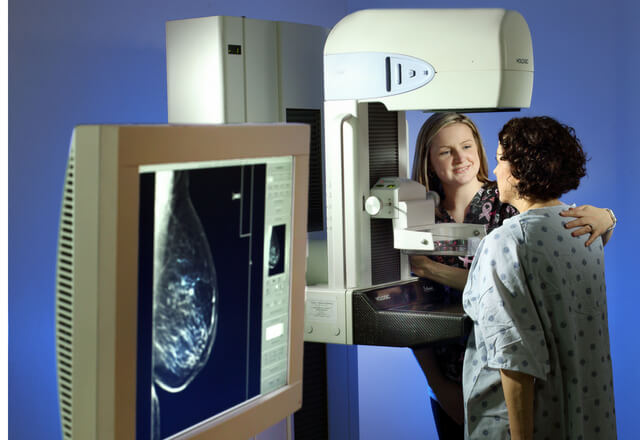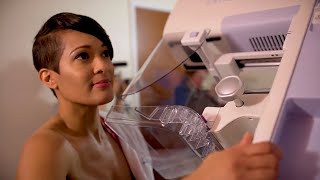Exams We Offer: 3-D Mammography

3-D mammography (also known as Tomosynthesis) is the most modern screening and diagnostic tool available for early detection of breast cancer.
While standard 2-D mammography produces a flat image, tomosynthesis creates a three-dimensional rendering of the breast — which results in greater accuracy, earlier breast cancer detection and a decrease in biopsies and recall rates.
Why choose a 3-D mammogram?
- Detects 41% more invasive cancers
- Reduces callbacks for a second look by 40%
- Takes 30 seconds
- Has been approved by the FDA
- Is appropriate for all women
For questions about 3-D mammography, please call our office at 443-997-7237.
Request An Appointment Request An Appointment
Schedule by phone

How to prepare for a 3-D Mammogram
-
- You will be asked to remove your clothing from the waist up and any other clothing or jewelry that may interfere with the exam.
- You will stand in front of the mammography machine and one breast will be placed on the X-ray plate.
- A separate flat plate will be brought down on top of the breast to compress it against the X-ray plate. You may feel some discomfort or pressure on your breasts during this X-ray process.This part of the process should only last for a few minutes.
- During your mammogram, the 3-D portion of the exam will occur simultaneously. The X-ray arm sweeps in a slight arc over the breast, taking multiple images in a matter of seconds.
A computer then produces a 3-D image of your breast tissue in one millimeter slices, providing greater visibility for the radiologist to see tissue details like never before.
-
There is typically no special type of care following a mammogram. However, your health care provider may give you additional instructions depending on your specific health condition.
What to Expect During Your First Mammogram
A mammogram is an important step in taking care of yourself and your breasts but not knowing what to anticipate can be stressful. Join Monica for her first mammogram experience with Johns Hopkins Medical Imaging to learn more about how to prepare for a mammogram and what to expect during and after the exam.
More about diagnostic CT examsWhy Choose Johns Hopkins Medical Imaging?
Physician Experts

#1 Radiology Department
State-of-the-Art Technology

Your Safety Is Always Our Priority

Specialty Technologists

Patient Care



